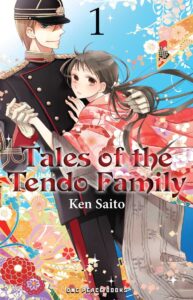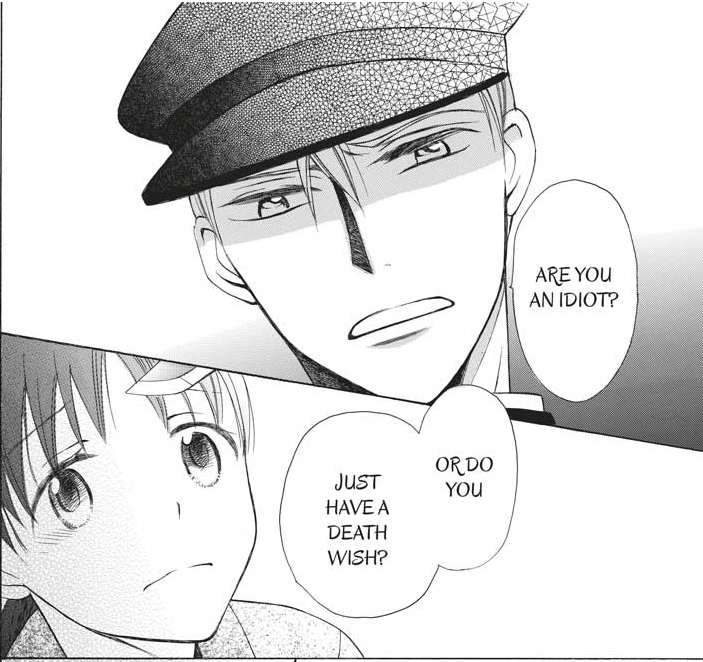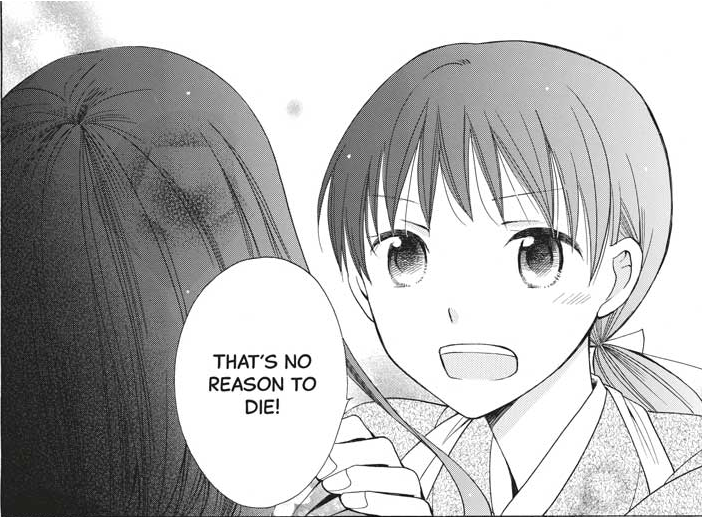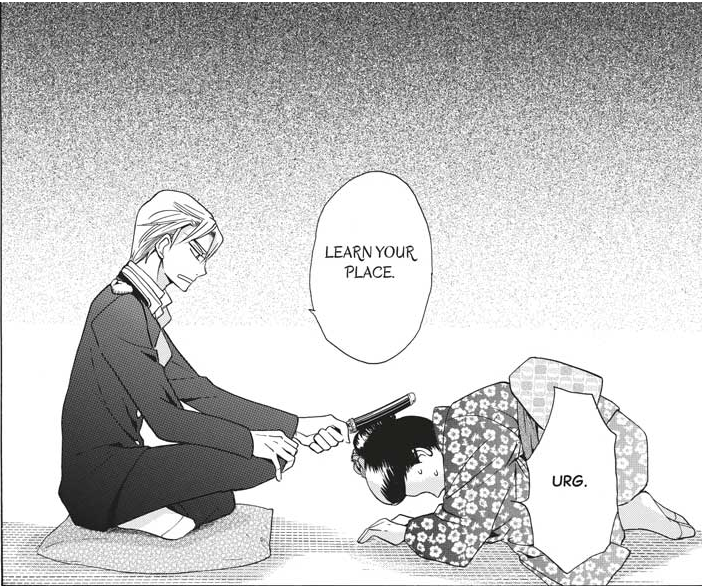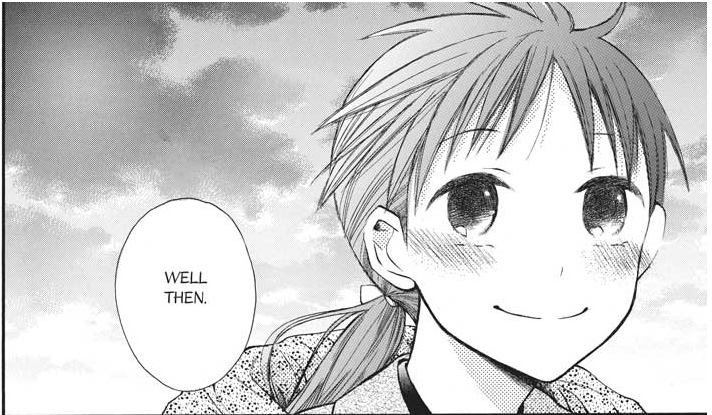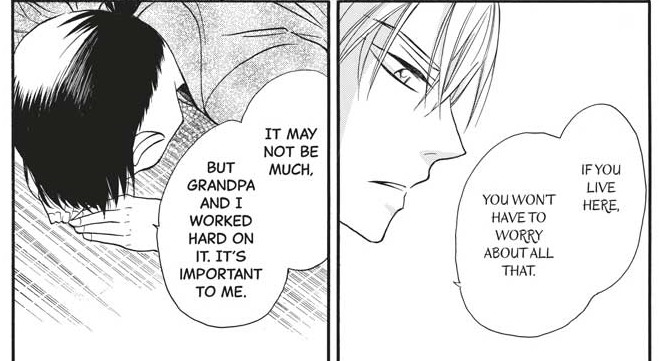Glad Tidings from the Tendo Family
Historical shoujo romantic drama is a relatively common subgenre of manga, and one that’s well-done more often than not. Veteran shoujo manga creator Ken Saito’s Tales of the Tendo Family (Tendou-ke Monogatari) premiered in 2014 and told its story through 14 volumes. Although the first book’s illustration doesn’t set new standards for shoujo art, its strong characterizations and brisk pacing make the tale instantly engrossing and highly enjoyable, for select readers. One Peace Books will begin releasing the official English-language translation of the manga on April 9.
Tales of the Tendo Family revolves around a nameless orphan girl with nothing to live for. But rather than wastefully end her own life, she seeks an opportunity to give up her life for the benefit of another person. The girl believes she’s found a prime opportunity to honorably sacrifice herself by taking the place of a woeful bride-to-be who’s slated to wed into a vicious, ruthless family. But the nameless sacrifice, who assumes the name “Hojo Ran,” finds that her experiences and earthy personality make her an ideal survivor in the harsh Tendo family.
Ken Saito’s graphic art is typical of the modern shoujo aesthetic. The illustration isn’t as literally rose-filled as some shoujo titles, nor is it always quite as detailed or expressive as similar manga art by Miho Obana or Natsuki Takaya. But the illustration is clean and consistently easy to comprehend and follow. Distinguishing characters is easy due to their distinct appearances. Background art is typically minimal except when necessary. While foreground designs are a bit minimal and simplistic, extensive use of screentone gives the art a rich, textural depth. Moreover, the original magazine serialization in Hakusensha’s LaLa DX periodically included sidebar advertisements. In the collected volumes those ads have been replaced by cute “bonus” illustrations.
Typical of a first volume, Tales of the Tendo Family volume 1 concentrates on introducing its cast, setting, and scenario. Readers get to know quite a bit about heroine “Hojo Ran.” Supporting characters Masato Tendo and Tachibana don’t get rich characterization, yet they both get more rounded personalities than one would typically expect from a first manga volume. Even the initially minor supporting characters are introduced with a bit more complexity than simplistic one-dimensional antagonists. The story setting at the very end of the Meiji era will likely be familiar to seasoned manga readers. The story scenario is also familiar from titles ranging from My Happy Marriage to Sacrificial Princess and the King of Beasts; however, the intensity of the oppressive, threatening scenario is likely more prominent in this manga than readers may be used to. In similar shoujo manga, the outsider protagonist is usually subject to harassment and mild bullying. The first volume of the Tendo Family manga does escalate to occasional instances of bloody domestic violence.
Furthermore, the protagonist isn’t just figuratively hopeless. Her suicidal tendencies aren’t strenuous, but they are genuine and may be especially troubling for delicate or sensitive readers. The figurative and literal darkness of the story is effectively offset by Hojo Ran’s pragmatic attitude and periodic flashes of cynical and even sinister slapstick comedy. The first manga includes mild nudity in the form of one shot of Ran’s nude behind. The book contains no adult language or sex.
One Peace Books’ official English translation by Matt Schley is fluid and natural. All of the characters speak with a slight formality typical of the time period, but rather uniquely, this manga gives a slightly different dialogue font to members of the elite Tendo family compared to the more practical and plain-spoken commoners. The difference in font subtly helps emphasize the difference in class status between characters regardless of the closeness of their relationships. Occasionally translated dialogue slips out of the bounds of illustrated word balloons. The slips are momentarily distracting but don’t affect the translation or readability. Sound effects are translated in-panel. One translator’s note is included as a footnote. The book contains the story’s first four chapters plus a seven-page-long “chapter 2.5.”
Ultimately, the first volume of creator Ken Saito’s manga Tales of the Tendo Family may be described as a version of Mark Twain’s Prince & the Pauper with Watashi no Shiawase na Kekkon or Taishou Otome Otogibanashi. Despite exhibiting some slightly weak illustration, the first book does a great job of introducing its characters and story. And the first book wraps up as a complete, satisfying introduction that lays groundwork for the story to continue in earnest. The story does deal with and depict some disturbing themes including suicide and domestic violence. These themes may offend or upset some readers. However, the manga is deliberate to never linger on its dark themes, instead concentrating on a hopeful and lightly romantic attitude. In that sense, Tales of the Tendo Family will appeal as much to fans of Fruits Basket as fans of My Happy Wedding.
